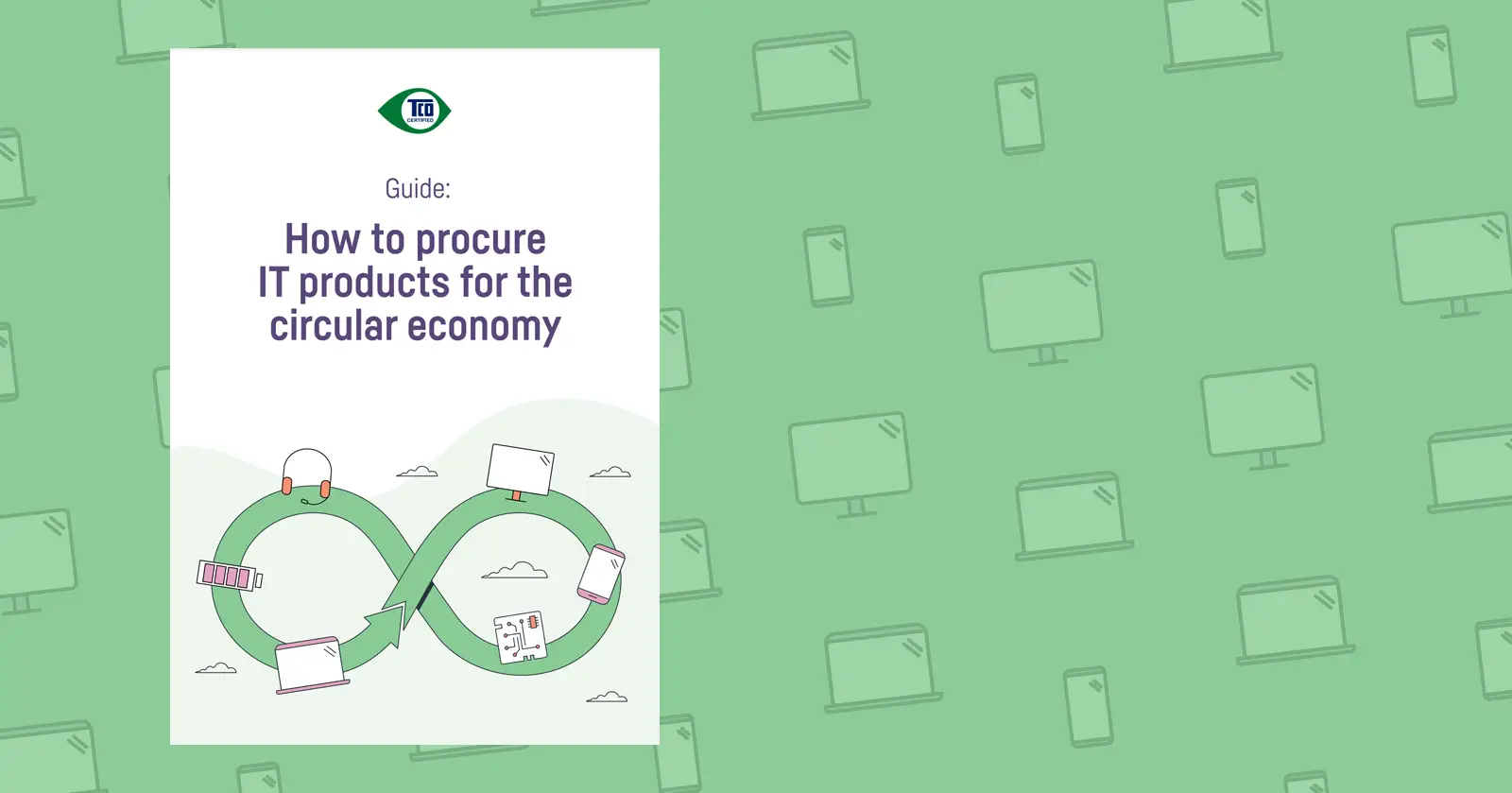Implementing circular IT practices can help reduce environmental risk and save money at the same time. Knowing where to start can be a key challenge for organizations. TCO Development’s new guide offers practical advice on procuring IT products that support a circular economy, helping organizations thrive in a sustainable future.
Why circular IT sourcing matters
Circular IT management helps reduce climate impact, e-waste and resource consumption, whilst saving significant costs. TCO Development’s guide outlines five key steps to successful circular IT procurement, providing practical advice to purchasers and decision makers.
Step 1: Partner with sustainability-driven suppliers
Engage in open dialogs, meetings, and requests for information (RFI) to gather information. Clearly communicate your organization’s sustainability and circularity ambitions and needs. Specify the sustainability data you require access to ensure transparency and accountability.
Step 2: Include circular criteria in procurement policies and processes
To enable circular IT management, products must be designed for longevity. Materials and components should be easily accessible and available.
Step 3: Prioritize durable, high-capacity products
Adopt a long-term perspective when purchasing IT products. Choose high-performance products with enough capacity to meet the organization’s needs for several years. Consider replacing traditional software with cloud-based solutions to reduce performance demands and extend product lifespan.
Step 4: Embrace the Second-Hand Market
Maximizing product life is critical for a circular economy. When a product no longer meets the initial user’s needs, it should be redistributed or sold to a second user. Second-hand purchases offer both cost saving and a reduced sustainability impact.
Step 5: Establish Clear KPIs
Identifying the right KPIs helps your organization meet legal requirements on sustainability reporting, such as CSRD, and take steps toward meeting internal or external circularity goals. For IT, the negative sustainability impacts are embedded in the products you use. Indirect climate impact (scope 3 emissions) stems from the manufacturing phase. Extending product lifespan directly reduces annual Scope 3 emissions. In addition to product use, track emissions from cloud services and repair activities.
Together toward sustainable IT
TCO Certified is the global sustainability certification for IT products, empowering both IT buyers and brands to make more responsible choices. Our comprehensive criteria are designed to drive social and environmental responsibility and are updated continuously to push sustainability where it matters most. Compliance with all criteria is always independently verified for every product. Our Roadmap for Sustainable IT is the long-term plan for addressing issues in four key areas: climate, substances, circularity and supply chain. By using TCO Certified, you join a global movement for sustainable IT.
Contact
Clare Hobby, Global PR Manager
Email




